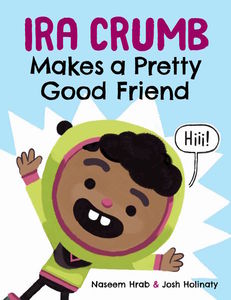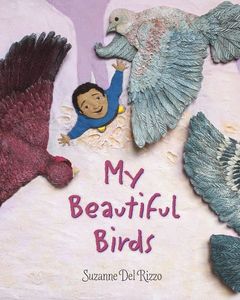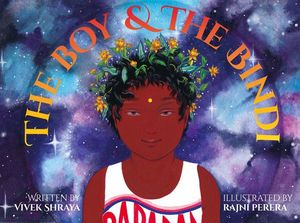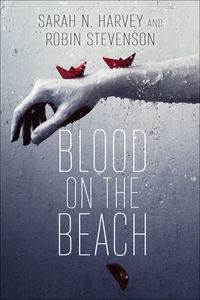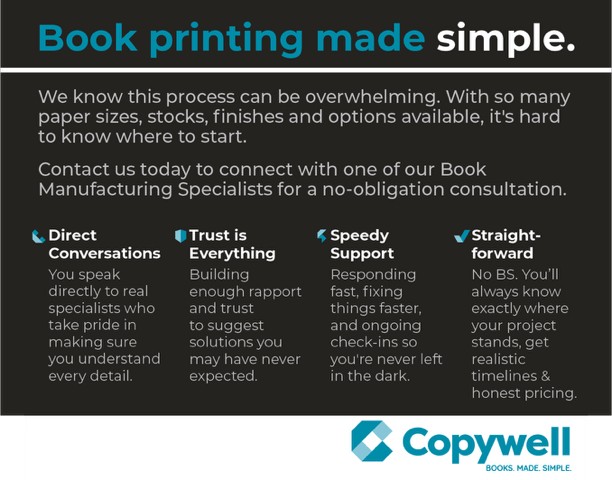Kid Lit Can: Personal "Firsts" In Kid Lit, Part One
By Susan Hughes
My Time To series of three board books– Nap Time, Play Time, and Bath Time – are being published this September. This signifies two “firsts” for me – first board books ever, and first time ever published by Annick Press. Am I excited? You bet!
So excited, in fact, that I decided to seek out and chat with other creators who are also enjoying the joy of “firsts” in children’s publishers. Thank you to Naseem Hrab, Suzanne Del Rizzo, Mary Beth Leatherdale, Vivek Shraya, and Robin Stevenson for indulging my curiosity and providing such super responses to my questions!
Susan:
Please tell us about your new book. Go ahead – brag! Why will kids love it?
Naseem:
Ira Crumb Makes a Pretty Good Friend is a picture book written by me and illustrated by Josh Holinaty. It’s about a new kid who tries really, really hard to make friends before starting at a new school. Ira’s world is filled with talking sandwiches, walking pickles and a quirky cast of characters. Kids will love Ira Crumb Makes a Pretty Good Friend because it’s super funny, super entertaining and super relatable. This book is like a warm hug that also makes you laugh!
Suzanne:
My Beautiful Birds is my first picture book as both author and illustrator, so I am pretty excited about that! It tells the story of Sami, a bird-loving Syrian boy who flees his home to escape the bombing of his town, and travels by foot with his family to a refugee camp. At the camp he struggles with fear, sadness, and has many unanswered questions, but through a chance encounter with wild birds he begins to heal.
Mary Beth:
Stormy Seas tells the true stories of five young boat refugees from pre-World War II to the present-day who were forced to flee their homes, risking their lives on the open seas to seek peace, safety, and a better life. Their dramatic journeys are terrifying yet hopeful. The courage and resilience that Ruth, Phu, Jose, Najeeba, and Mohamed show in the face of such difficult situations is riveting and truly inspiring.
Vivek:
The Boy and the Bindi is a playful picture book about a young boy’s fascination with the dot on his mother’s forehead. With his mom’s help, the boy discovers that wearing a bindi allows him to joyfully explore and express his difference—and that even a little “spot” can be meaningful and magical.
Robin:
Blood on the Beach is a YA mystery thriller set in the Pacific Northwest. It’s about a group of teens thrown together at a treatment camp on a remote island, who find themselves fighting for their survival when it becomes clear that there is a killer in their midst. The story is told from the alternating points of view of two teens: Alice, whose police officer mother thinks she has a drinking problem, and Caleb, who assaulted his abusive stepfather.
Susan:
How is this book a “first” for you?
Your CanLit News
Subscribe to Open Book’s newsletter to get local book events, literary content, writing tips, and more in your inbox
Naseem:
I’ve worked in children’s publishing for over 10 years — as a librarian at the Canadian Children’s Book Centre and, currently, in marketing at Kids Can Press — and this is the first time I’ve written a picture book! Prior to writing this book, I’d only ever written comedy essays for adults that had been published in newspapers and online.
I’ve always, always, always wanted to write children’s books, but I could never quite figure out the mechanics of storytelling. People can tell you that your story needs to have a strong character, but how do you actually create one? It was only when I started taking improvisation classes that I finally started to understand the fundamentals of storytelling.
Suzanne:
My Beautiful Birds is my first published picture book that I both wrote and illustrated. I have illustrated three picture books: Skink on the Brink, by Lisa Dalrymple, Gerbil, Uncurled, by Alison Hughes, and Sky Pig, by Jan Coates. The illustrations for each of these books were created using plasticine and various mixed media (such as: paper, watch gears, and even actual wood shavings) to best suit the project. With My Beautiful Birds I have another illustration “first”- I created the final artwork in polymer clay which I baked (to harden) then added various acrylic glazes and washes overtop to give depth and highlight texture- no plasticine was used this time.
Mary Beth:
For more than twenty-five years, I’ve worked as an editor. I started my career in educational publishing. After being the Editor of Chirp and OWL magazines, I was the Editorial Director of books and magazines. After leaving Owlkids to freelance, I co-edited three anthologies with Lisa Charleyboy, Dreaming in Indian, Urban Tribes and #NotYourPrincess, coming Fall 2017. However, Stormy Seas was my first solo book project. Although the book is based on interviews with five young boat refugees, its creative non-fiction.
Vivek:
While I have explored gender creative protagonists in other books, like my first book, God Loves Hair, The Boy & the Bindi is my first book especially for children.
Robin:
Blood on the Beach is actually a double first for me! My first YA mystery, and the first time I have co-written a novel with another author.
Susan:
Please tell us how you came to create your book.
Naseem:
Initially, I was trying to adapt a Persian folktale about a little mouse who was trying to meet a husband. I was speaking to a friend about it and we thought it might be more relatable to children if the mouse interviewed new friends, not suitors. As I worked on the idea, it morphed into a story about a kid who was so anxious about making friends that he tried just a little too hard to make them (mostly because that’s how I feel when I’m trying to make friends) and that kid turned out to be Ira!
I did try to push myself to be as original as I could be in my approach to Ira Crumb Makes a Pretty Good Friend because there’s no shortage of “making friends” books out there. I did this by always trying to reject the first idea I came up with. In improv, there’s a fantastic game called “Should Have Said” where the players can be interrupted by the audience members if the audience members don’t like what they’re seeing on stage. When an audience member calls out “Should have said!” the player has to come up with a new line or approach to the scene. I play this game all the time when I’m writing.
Suzanne:
My story was inspired by an article I read while looking online for resources to help explain the Syrian Civil war to my children. I couldn’t get this little article, about a boy who finds solace in wild birds in a refugee camp, and the other images of displaced refugee children and their families out of my head. I began writing My Beautiful Birds in the hope that it would not only provide a window into the Syrian crisis, in age-appropriate manner, but also remind children to look for similarities or connections with one another when meeting new friends. I just wrote following my heart. Having my very own picture book published has been a big dream of mine. It feels so rewarding to conceive a story idea, write and rewrite it…and then after many critiques to have it accepted by a publisher and made into a real book to hold in your hands and share!
Mary Beth:
In the fall of 2015, Rick Wilks, the publisher at Annick, approached me with the idea of doing a photo-based, non-fiction book on boat refugees. I was immediately drawn to the project. I was feeling overwhelmed by the news reports of refugees crossing the Mediterranean and Aegan Seas and was eager to learn more and in a small way take action in the way I know best – making sense of it for myself by making sense of it for young people.
Vivek:
A few years ago, I started wearing a bindi in public and was surprised by the negative reaction it elicited. This repeated experience made me think about the ways that even a small dot is gendered and cause for discomfort in North America when worn by someone who appears to be male. I had no intentions of turning this observation into art, but the beauty of art is that you never know when a feeling or thought might develop into something more.
Because God Loves Hair also features a gender-creative protagonist, I was concerned about repeating myself. This was one of the reasons I had actually avoided the idea of writing a children’s picture book. But after writing The Boy & the Bindi, I shared this concern with my friend and school teacher Robin Phillips (who also co-developed an accompanying teaching guide for the book), and her response was that the world needs as many stories about gender-creative kids as possible.
Robin:
My co-author Sarah N. Harvey and I have a long history together. She was the editor who picked my YA novel out of the slush pile, which led to my first publishing contract ten years ago. Since then she has edited a dozen of my books, including middle grade fiction, young adult novels, and my first non-fiction book, Pride: Celebrating Diversity and Community. We have co-taught writing courses and workshops, she mentored me when I began working as a freelance editor, and over the past decade we’ve become good friends. A couple of years ago, we discovered that we both loved mysteries—and we decided it would be fun to take a shot at writing one together.
Susan:
The world of traditional children’s publishing is very competitive and many, many manuscripts end up in the slush pile. How did you know when your idea or particular manuscript was ready for submission? How did you decide where to submit?
Naseem:
When I’ve done everything I can do to make a manuscript its best including getting a ton of feedback from trusted friends, I know it’s ready for a publisher’s eyes. I’m pretty lucky to work in children’s publishing — I’ve gotten to know a lot of editors over the years and I think I have a good understanding of publishers’ different sensibilities. I decided to submit Ira Crumb Makes a Pretty Good Friend to the Editorial Director at Owlkids Books, Karen Li, because I knew she would get Ira. We were colleagues years ago and I loved working with Karen, so I was really excited at the possibility of working with her in an author-editor capacity.
Since I work in the industry, we wanted to make sure that the manuscript was selected on its merits alone, so Karen took the manuscript to the publishing board at Owlkids with a pen name: Abe Bishop. (The name was inspired by my first pet goldfish’s name and the first street I lived on.) Anyway, it turned out that the publishing board liked Abe's manuscript. He seems like a real up-and-comer, if you ask me!
Suzanne:
My critique group and a few “writerly” friends were instrumental in helping me know when my manuscript was polished and ready. I’m sure most authors get the dreaded “analysis paralysis” when their draft is oh-so-close. Critiques with different, fresh perspectives helped me see where my manuscript needed tweaking, what was and was not working, and when it was finally tight, polished and ready to submit. I research publishing houses all the time to stay up on current trends, and check out new titles, so I had a few publishers in mind that I thought might be a good fit for this project. I received only one rejection, but it came with some wonderful editorial feedback that in the end helped strengthen my manuscript, so being a glass-half full sort of girl, I am quite thankful for that.
Mary Beth:
Since Annick came to me with the concept for this book, my situation was somewhat different. However, I would say even when a publisher comes to you with a good idea, it’s a challenge to take the concept and turn it into a strong book. This project evolved as much or more than any I’ve ever worked on as an editor. Like all good projects, I knew it was ready when it was distilled to down to its essence and did what we hoped it would do — tell compelling stories, provide a mirror to understand the current refugee crises, and offer hope.
Vivek:
I am fortunate that my current publisher, Arsenal Pulp Press, is one that is invested in taking “risks” and publishing innovative books by underrepresented writers. They had never published a children’s book before (and their submission policy at the time also said they weren’t accepting children’s picture books), but with the assistance of Cory Silverburg (author of “What Makes A Baby” & “Sex Is A Funny Word”), I wrote and submitted a proposal to Arsenal. Five months later, I received the great news that The Boy & the Bindi would be Arsenal’s first children’s picture book.
Robin:
Sarah and I wrote, revised, and polished our manuscript together, and several friends gave us great feedback which we incorporated into our revisions. As we have both published young adult novels with Orca Book Publishers before, we decided to submit there first. With the Pacific Northwest setting, fast-paced story and diverse cast of characters, we thought it seemed a good fit—and we were delighted that Orca agreed!
Susan:
What did you find most challenging about creating your book?
Naseem:
Creating Ira’s character was the most challenging part of the writing process. When you want your character to be imperfect and overly enthusiastic, you need to find a way to make him incredibly likable at the same time. You need to make sure that you get at the heart of the character so that readers can really understand him. And Josh’s illustrations really balance out Ira’s character — Ira looks sooo adorable!!!
Suzanne:
I wanted to ensure my book was respectful and accurate in my depiction of Syrian people. I did a large amount of research to gain insights into their religion beliefs, modesty and clothing, food, life at refugee camps etc., in order to depict an accurate cross-section of refugee life. I was deeply moved and inspired by the courage, determination and quiet strength of the Syrians.
I also knew I wanted to do something different and unexpected with the art for My Beautiful Birds. I wanted it to echo the huge emotional range experienced within Sami’s personal journey as well as his family’s arduous trek. I felt I could best achieve these qualities with a more painterly, expressive technique, using polymer clay and acrylics in a sophisticated, limited colour palette. In my head I knew exactly how I wanted the art, and after lots of experimentation with the polymer clay and acrylics, I worked out a multi-step process that I was excited about. It took a few false starts but in the end I am thrilled with how the artwork turned out.
Mary Beth:
Telling someone’s story is a huge responsibility at any time. However, until I started to look for boat refugees to share their traumatic experiences — and many were unable to — I didn’t really realize the magnitude of what I was asking. Trying in very limited text to give a sense of the distinct personalities, situations, and experiences of these five amazing individuals was very challenging but an honour for which I’m immensely grateful.
Vivek:
Compared to my other recent projects, like my book of poetry, even this page is white, which delves into racism and white supremacy, the creative process behind The Boy & the Bindi felt joyful and smooth. Perhaps the most challenging part of the process was waiting to hear back from my publisher about my proposal!
Robin:
Probably the most challenging thing about this project was making sure all the details were consistent -- with two authors, eleven characters and a twisty mystery plot, there were a lot of things to keep track of! Sarah and I drew a map of the island to make sure we had the same mental image of the setting, and we edited very carefully to make sure that there were no missed steps or plot holes.
Susan:
Stay tuned for part 2 coming to this column in May.
Naseem Hrab is the author of Ira Crumb Makes a Pretty Good Friend and her comedy writing has appeared on McSweeney's Internet Tendency and The Rumpus. Naseem worked as a librarian and now works in children's publishing. She lives in Toronto, Ontario. Visit her online at www.naseemhrab.com
Suzanne Del Rizzo has always loved getting her hands messy. She traded her job in scientific research for a career in children’s illustration. Known for her dimensional illustrations that use Plasticine, polymer clay, and other mixed media to bring rich texture and imagination to her books, Suzanne is adding “author” to her resumé with My Beautiful Birds. She lives in Oakville, Ontario with her husband and 4 children. Suzanne can be found in the internet right here: suzannedelrizzo.com
Mary Beth Leatherdale writes, edits, and consults on books, magazines, and digital resources for children and youth. She lives in Toronto with her family and her dog Champ. Visit her at www.marybethleatherdale.com.
Vivek Shraya is a Toronto-based artist whose body of work includes several albums, films, and books. Website? vivekshraya.com.
Robin Stevenson is an award-winning Canadian author of more than 20 books for kids and teens. She lives with her family in Victoria BC. You can find her online at www.robinstevenson.com
The views expressed by Open Book columnists are those held by the authors and do not necessarily reflect the views of Open Book.
Susan Hughes is an award-winning author of children's books — both fiction and non-fiction — including The Island Horse, Off to Class, Case Closed?, No Girls Allowed and Earth to Audrey. She is also an editor, journalist and manuscript evaluator. Susan lives in Toronto. Visit her website, www.susanhughes.ca.
